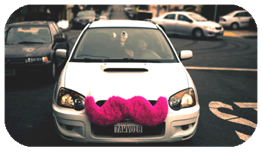 On rideshare apps like Lyft and Uber as well as platforms like Airbnb, customers are encouraged to rate their overall experience out of five stars. The general goal of these ratings is to inform both the company and future customers about an individual’s performance on the job. After all, if an Uber driver keeps their car dirty or swerves all over the road, then the rider can leave a low rating to reflect their subpar experience. Then again, that’s how Continue reading
On rideshare apps like Lyft and Uber as well as platforms like Airbnb, customers are encouraged to rate their overall experience out of five stars. The general goal of these ratings is to inform both the company and future customers about an individual’s performance on the job. After all, if an Uber driver keeps their car dirty or swerves all over the road, then the rider can leave a low rating to reflect their subpar experience. Then again, that’s how Continue reading








